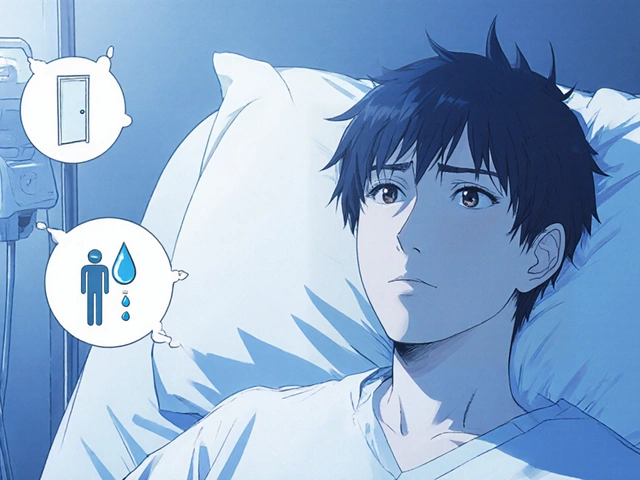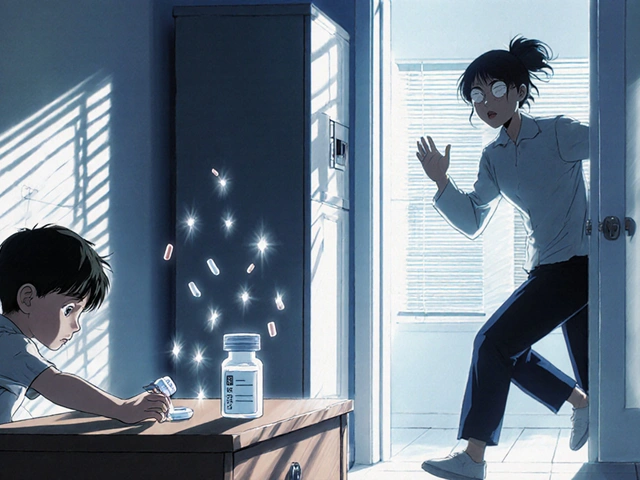Every year, over 300,000 women die from cervical cancer worldwide. Most of those deaths aren’t random-they’re preventable. The virus behind nearly all of them, human papillomavirus (HPV), is common, often symptomless, and doesn’t always lead to cancer. But when it sticks around long enough, it can turn normal cells into precancerous ones-and eventually, invasive cancer. The good news? We have tools to stop it before it starts: vaccines, smarter screening, and better follow-up care. This isn’t science fiction. It’s happening right now, and it’s changing the future of women’s health.
What HPV Actually Does
HPV isn’t one virus. It’s a family of more than 200 types. About 40 of them affect the genital area. Most cause harmless warts or clear up on their own within a year or two. But 14 types are called high-risk because they can cause cellular changes that lead to cancer. HPV 16 and 18 are the worst offenders, responsible for about 70% of all cervical cancers.
What makes HPV dangerous isn’t the infection itself-it’s what happens if it doesn’t go away. Persistent infection can cause cells in the cervix to grow abnormally. These changes, called precancers, usually take 10 to 20 years to become cancer. That’s a long window to catch and fix them. But only if you’re being screened.
How Vaccines Stop HPV Before It Starts
The HPV vaccine doesn’t treat infections. It prevents them. The first vaccine, Gardasil, came out in 2006. Today’s versions-Gardasil 9-protect against nine HPV types, including 16 and 18, plus five others linked to cancer. It’s not just for girls. Boys get it too, because HPV causes cancers in men too: throat, anal, penile.
The vaccine works best when given before exposure. That’s why it’s recommended for kids aged 11 to 12. But it’s still effective up to age 45. In Australia, where vaccination rates hit 85% for teens, cervical precancers dropped by 86% in young women within 10 years. The U.S. has seen similar drops in HPV infections among teens since the vaccine became routine.
Here’s the catch: vaccination doesn’t replace screening. Even if you got all your shots, you still need regular tests. The vaccine doesn’t cover every cancer-causing type, and some people were exposed before vaccination. Screening is still your safety net.
Screening Has Changed-Big Time
For decades, the Pap test was the gold standard. A doctor scraped cells off the cervix and looked for abnormalities under a microscope. It worked. Cervical cancer rates dropped by half in the U.S. since the 1970s.
But now, we know more. We know HPV causes the changes. So instead of waiting for cells to look weird, we test for the virus itself. That’s called primary HPV testing. It’s more sensitive. It catches more precancers earlier.
As of 2025, major health groups like the American Cancer Society and the U.S. Preventive Services Task Force agree: for people aged 25 to 65, primary HPV testing every five years is the best option. It’s safer than a Pap test every three years. Why? Because if your HPV test is negative, your risk of developing serious precancer in the next five years is extremely low-lower than with a normal Pap result.
Two tests are FDA-approved for this: the cobas HPV Test and the Aptima HPV Assay. Both detect the 14 high-risk types. The cobas test even separates HPV 16 and 18 from the others, which helps doctors decide who needs immediate follow-up.

What About the Pap Test?
The Pap test isn’t gone. It’s still the go-to for people aged 21 to 24. Why? Because HPV is common in young people, and their immune systems usually clear it. Testing too early leads to unnecessary anxiety and procedures. For ages 25 to 29, HPV testing is now allowed-but many doctors still use Pap tests because guidelines vary slightly between organizations.
For those 30 to 65, you have three options:
- Primary HPV test every 5 years (recommended)
- Pap test every 3 years
- Both tests together (cotesting) every 5 years
But if you’re choosing one, go with HPV testing. It’s more accurate and less frequent. Fewer visits. Less stress. Better outcomes.
Self-Collected Tests Are a Game Changer
One of the biggest barriers to screening? Getting to a clinic. Fear. Embarrassment. Lack of access. Transportation. Cost.
Now, you can collect your own sample at home. Just swab your vagina with a simple kit-no speculum, no doctor. Studies show self-collected HPV tests are almost as accurate as those done by clinicians. A 2024 Kaiser Permanente study found self-sampling had 84% sensitivity and 91% specificity. That’s close enough to trust.
In Australia and the Netherlands, offering self-collection boosted screening rates by 30-40% in underserved communities. The CDC says nearly 30% of cervical cancers happen in women who’ve never been screened. Self-testing could change that.
Right now, it’s available in some clinics and pharmacies. Expect it to expand. By 2026, most U.S. insurers will cover it. It’s not a magic bullet-but it’s a powerful tool to reach people who’ve fallen through the cracks.
What Happens If Your Test Is Positive?
A positive HPV test doesn’t mean you have cancer. It means you have a high-risk type. Now what?
Here’s the standard path:
- If you test positive for HPV 16 or 18: You’ll be referred for a colposcopy-a closer look at your cervix with a magnifying tool. A biopsy may follow.
- If you test positive for other high-risk types: You’ll get a Pap test. If that’s abnormal, you’ll go to colposcopy. If it’s normal, you’ll be retested in 12 months.
This approach reduces unnecessary procedures. You’re not treated for every infection. Only the ones that show signs of real damage.
And if precancer is found? It’s treatable. A simple procedure in the doctor’s office-like a loop electrosurgical excision (LEEP)-can remove abnormal tissue before it turns cancerous. Success rates are over 95%.

Why This Matters for Everyone
Global health leaders set a goal: eliminate cervical cancer as a public health problem by 2050. That means fewer than 4 cases per 100,000 women. The World Health Organization’s 90-70-90 targets are the roadmap:
- 90% of girls vaccinated by 15
- 70% of women screened by 35 and again by 45
- 90% of precancers and cancers treated
High-income countries like Australia and the U.S. are close. Australia is on track to eliminate cervical cancer by 2035. The U.S. is behind because of uneven access. Black women die from cervical cancer at 70% higher rates than white women. Rural women are less likely to get screened. Immigrant women often don’t know about vaccines.
These aren’t just medical problems. They’re systems problems. Better screening tools, self-testing, and outreach can fix them.
The Future Is Here
AI is now helping analyze Pap smears. Paige.AI’s system, approved by the FDA in early 2023, can spot abnormal cells faster and more accurately than some human pathologists. It’s being rolled out in hospitals across the U.S. and Australia.
And research is already looking ahead. A 2023 study found that after two negative HPV tests, the risk of cervical cancer was so low that screening every six years might be safe. That’s not official yet-but it’s coming.
By 2025, primary HPV testing will be the norm in most clinics. The Pap test will become a backup. Self-sampling will be routine. Vaccines will be standard for all genders.
This isn’t about fear. It’s about control. You can’t always stop viruses. But you can stop them from killing you.
Do I still need a Pap test if I got the HPV vaccine?
Yes. The HPV vaccine protects against the most common cancer-causing types, but not all of them. You still need regular screening. Vaccination and screening work together. One prevents infection. The other catches any problems that slip through.
Can men get tested for HPV?
No routine HPV test exists for men. There’s no approved screening method for the penis, anus, or throat. But men can still get the HPV vaccine to prevent infection and reduce transmission. They’re also at risk for HPV-related cancers, so vaccination is strongly recommended up to age 45.
Is HPV testing painful?
For clinician-collected tests, it’s similar to a Pap smear-mild discomfort, not pain. Self-collected tests are even easier: just insert a swab into the vagina and rotate it gently. Many people find it less stressful than a pelvic exam. No speculum, no doctor, no embarrassment.
How often should I get screened after age 30?
Every five years with primary HPV testing. If you’re getting a Pap test only, every three years. Cotesting (Pap + HPV) is also every five years. The five-year HPV interval is safe because the test is more accurate and detects problems earlier than Pap alone.
What if I’m over 65?
You can stop screening if you’ve had regular negative tests in the past 10 years and no history of precancer. If you’ve never been screened or have a history of abnormal results, talk to your doctor. Age alone doesn’t mean you’re safe.
Can I get the HPV vaccine if I’m over 26?
Yes. The FDA approved Gardasil 9 for people up to age 45. It’s still effective if you haven’t been exposed to all nine types. Insurance coverage may vary, but many plans cover it. Talk to your provider-even if you’re older, it’s worth considering.
What to Do Next
If you’re between 25 and 65 and haven’t been screened recently, schedule an appointment. Ask for primary HPV testing. If your clinic doesn’t offer it, ask why. Demand better. If you’re under 26 and haven’t been vaccinated, get the shot. It’s a one-time decision that could save your life-or someone else’s.
If you’ve had a positive HPV result, don’t panic. Follow up. Most cases never become cancer. You’re not alone. Millions of people test positive every year. The system works-if you use it.
And if you’re a parent? Get your child vaccinated at 11 or 12. It’s not about sex. It’s about cancer prevention. Simple as that.





Ryan Everhart
November 12, 2025 AT 21:34Not a medical failure. A system failure.
David Barry
November 13, 2025 AT 19:59Alyssa Lopez
November 14, 2025 AT 22:30Alex Ramos
November 15, 2025 AT 06:11My doc said the results were just as reliable. And now my mom’s getting one too. She’s 62 and never got screened. This tech? It’s a game changer. 🙌
edgar popa
November 15, 2025 AT 20:39Eve Miller
November 17, 2025 AT 05:08Chrisna Bronkhorst
November 18, 2025 AT 14:32Amie Wilde
November 19, 2025 AT 16:11Don’t ignore it. Don’t panic. Just act.
Gary Hattis
November 20, 2025 AT 07:29This isn’t just about medicine. It’s about education. About access. About dignity. We need to bring this info to the backroads, not just the city clinics.
Esperanza Decor
November 21, 2025 AT 13:50